Top 10 Biggest Google Cloud News Stories Of 2022
From its $5.4 billion game-changing acquisition of Mandiant to outpacing AWS and Microsoft in cloud sales growth rates, CRN breaks down the 10 biggest Google Cloud news stories of 2022.

Google Cloud created some serious buzz in 2022 that has led the cloud company to be in a better market position than ever before.
From Google’s blockbuster $5.4 billion acquisition of cybersecurity star Mandiant to globally expanding its cloud market reach and partner ecosystem to new heights, the Mountain View, Calif.-based company has set itself up for market-share growth in 2023.
Google Cloud is on pace to generate more than $26 billion in total sales in 2022, which would be a record for the cloud giant, up from $19 billion last year.
[Related: Public Cloud Market To Hit $1 Trillion By 2026: Here’s Why]
Thomas Kurian Makes His Move
Google Cloud CEO Thomas Kurian spoke to CRN this year about his bullish goals and plans to boost its global cloud market share against competitors like Amazon Web Services and Microsoft.
“We are seeing really unprecedented demand from customers, and our partners are critical to meeting this demand,” Kurian told CRN.
Kurian made many of his goals become reality in 2022 around launching innovative offerings for data analytics, artificial intelligence and cybersecurity, while at the same time elevating the partner ecosystem by forming new partnerships and driving channel synergies.
Google CEO Sundar Pichai was also bullish about Google Cloud this year.
Even as Google Cloud reported an operating loss each quarter in 2022, Pichai was adamant that the cloud company will continue play a major part in Google’s future.
“I’ve long shared that cloud is a key priority for the company,” said Pichai in October. “The long-term trends that are driving cloud adoption continue to play an even stronger role during uncertain macroeconomic times.”
Here are the 10 biggest Google Cloud news stories of 2022 that customers, employees and partners need to know.
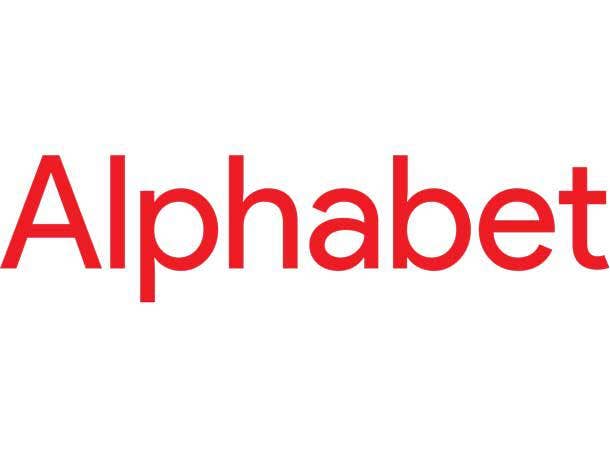
No. 10: Google, Alphabet Go All In On Google Cloud
One of the biggest statements for Google Cloud in 2022 was its parent company Google and Alphabet’s relentless dedication to the cloud company throughout the year, regardless of whether or not Google Cloud turned a profit.
“I’ve long shared that cloud is a key priority for the company,” said Pichai in October. “The long-term trends that are driving cloud adoption continue to play an even stronger role during uncertain macroeconomic times.”
Pichai dubbed Google Cloud a “priority” for the company as its sales growth far outpaced Google in 2022.
Although sales surged at Google Cloud this year, it still is operating at a net loss.
For example, Google Cloud reported an operating loss of $699 million for its recent third-quarter 2022.
However, Google is spending billions on building new data centers, acquiring new cloud customers and investing in innovation for Google Cloud with a long-term vision.
Google CFO Ruth Porat said in October the company will continue to “invest meaningfully” in Google Cloud for the foreseeable future as the strategy right now is growth investments versus profits.
The Takeaway For 2023: The focus for Google right now is to scale Google Cloud, which is relatively new to the public cloud market compared with rivals AWS and Microsoft. In 2023, it will be key for Google Cloud to continue to lower its net losses each quarter and potentially break even by fourth-quarter 2023.

Troy Bertram
No. 9: Google Cloud Launches New Public Sector Division; Hires AWS Executive To Lead It
Google Cloud launched a new dedicated public sector organization focused on driving new customer wins and helping U.S. public sector institutions.
To kick-start the new organization, Google hired longtime AWS and Dell Technologies executive Troy Bertram. At AWS, he was general manager of business development and partner sales for AWS global public sector.
“As the fastest-growing cloud in the market, we’ll scale our work in the public sector very quickly,” Bertram, executive managing director of Google Cloud’s public sector partner ecosystem, told CRN this year.
“This is all about unleashing the power of Google to advance the mission of government and educational institutions,” said Bertram. “We wake up every morning to work with our channel ecosystem. Our mission is to accelerate the digital transformation of our government and education customers with our partners.”
Some public sector wins in 2022 include the Central Dutch Government, South Florida Water Management agency and part of the massive $9 billion IT contract for the U.S. Department of Defense.
The Takeaway For 2023: Google Cloud is striving to compete better and win via channel partners in the public sector against its cloud competitors. It will be interesting to see if Google Cloud’s public sector push results in a major increase in sales next year, which would likely be highlighted in Google’s quarterly earnings report.

No. 8: Hiring Freeze But No Mass Layoffs at Google Cloud
There have been countless layoffs by technology companies in 2022, including Intel, HP Inc., Microsoft, Twilio and Nutanix, to name a few.
Google and, in particular Google Cloud, did not have to conduct mass layoffs this year as many of its IT peers did.
Parent company Google did announce a hiring freeze across the company in July, but that was lifted from Google Cloud after a few months.
Google CFO Porat said in October that Google will “slow the pace of hiring” in 2023.
However, it appears that Google Cloud will not be significantly impacted as Porat said the company will continue to hire technology professionals.
“Within this slower head-count growth next year, we will continue hiring for critical roles, particularly focused on top engineering and technical talent,” said Porat.
The Takeaway For 2023: Although rumors are currently swirling that parent company Google could potentially make layoffs soon, going by what Google’s biggest executives are saying Google Cloud employees look safe for 2023.
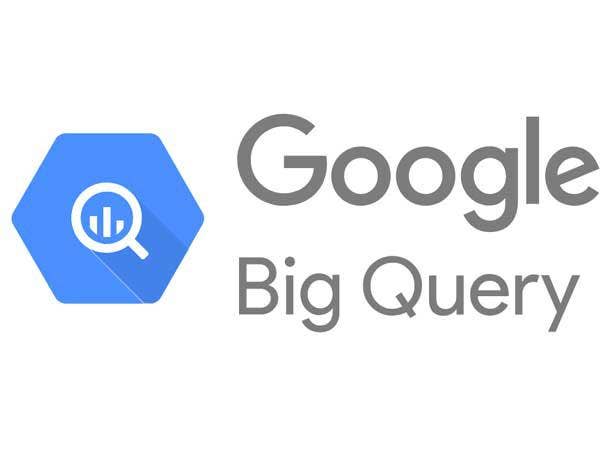
No. 7: Google Cloud Doubles Down On Data Analytics
Google Cloud wants data analytics to be a big cloud market differentiator against the competition.
As part of search and data giant Google, the company has vast amounts of experience with organizations of all shapes and sizes.
In 2022, Google Cloud enhanced its data analytics portfolio by adding support for unstructured data in BigQuery to expand the ability of people to work with all types of data.
“Now data teams can analyze structured and unstructured data in BigQuery, with easy access to Google Cloud’s capabilities in machine learning, speech recognition, computer vision, translation and text processing, using BigQuery’s familiar SQL interface,” said Gerrit Kazmaier, vice president and general manager of data analytics at Google Cloud, this year.
Google Cloud also unified BigQuery and its operational databases. Datastream for BigQuery helps customers replicate data from AlloyDB, PostgreSQL, MySQL and Oracle directly into BigQuery to make sure applications have the latest information.
The company also announced a BigQuery preview of an integrated experience for Apache Spark, which is a top open-source analytics engine for large data processing.
Kazmaier told CRN that Google Cloud has streamlined its partner strategy around data analytics by removing “friction points” this year.
“By taking all of the plumbing out in between our partners, they can really focus on the business outcomes, how they position the value scenario to our customers,” he said. “They are not required now to go into the depth of the technical integration side, audit for themselves, or take their customers through that.”
The Takeaway For 2023: Google Cloud continued to strive to make its data analytics portfolio second to none in 2022. Next year, customers and partners should expect a constant drumbeat of new data analytics capabilities.
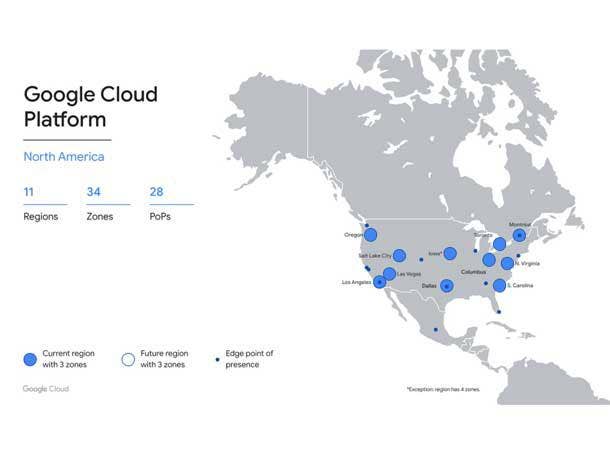
No. 6: Explosion In Global Cloud Regions And Data Centers
Google spent billions of dollars in 2022 expanding its data center and cloud reach by launching new cloud regions across the globe.
Specially, Google Cloud began entering new markets abroad at a fierce pace in 2022.
Google Cloud said this year it is building and equipping new data centers in Malaysia, Thailand and New Zealand, which marks the company’s first cloud region in each country to provide local customers with the infrastructure that powers cloud services.
In addition, Google Cloud unveiled plans this year to have its first cloud regions in Norway and Sweden.
Cloud regions are made up of one or more data centers.
The new regions will join Google’s 34 other cloud regions operating around the world.
In addition to new data centers aboard, Google unveiled new data centers or expansion plans for cloud regions in Nebraska, Georgia, Iowa, Oklahoma, Nevada, Tennessee, Virginia and Texas this year.
In early 2022, Google’s CEO said the company would spend a whopping $9.5 billion on data centers and U.S.-based offices by the end of 2022.
“Our investments in data centers will continue to power the digital tools and services that help people and businesses thrive,” Pichai said in April.
The Takeaway For 2023: Google is pouring billions into expanding its cloud reach by building new data centers on a global basis to expand its customer reach. It will be interesting to hear in early 2023 if Pichai has a similar $9.5 billion plan for next year.
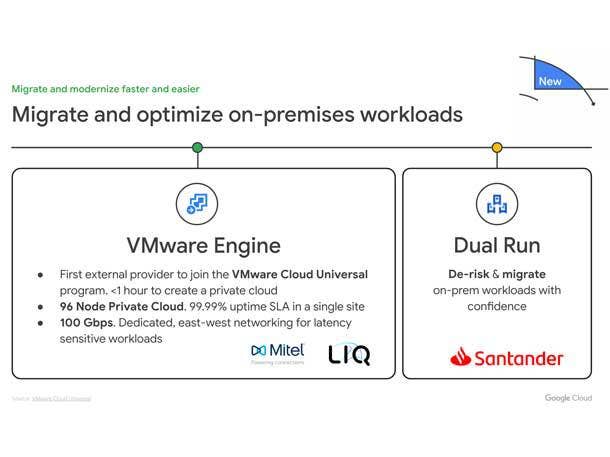
No. 5: Google Cloud’s 2022 Innovation Engine
As seen with the slew of launches at Google Cloud Next this year, the company continues to be on an innovation tear.
The company focused its product and services launches this year around artificial intelligence, data analytics, cybersecurity and Google Workspace, to name a few areas.
One of the more significant launches this year included Dual Run, a new mainframe modernization offering from Google Cloud aimed at simplifying and reducing the risk of enterprises’ migration of legacy mainframe systems to the cloud.
Other new product highlights included a new virtual machine family dubbed C3; a Network Analyzer module; the Google Cloud Feet Routing API, which focuses on fleetwide optimization; and Vertex AI Vision that extends Vertex AI to be accessible to developers.
On the cybersecurity front, Google Cloud launched its new Software Delivery Shield to help developers tackle supply chain security challenges, as well as Chronicle Security Operations, a software suite that enables security teams to better detect, investigate and respond to threats.
The Takeaway For 2023: There was no lack of R&D at Google Cloud this year. Partners and customers should expect similar innovation to come from the company in 2023.

Kevin Ichhpurani
No. 4: Google Expands IT Partnerships And Partner Ecosystem
From Palo Alto Networks to Deutsche Telekom, Google Cloud doubled down on forming strategic partnerships with IT vendors to accelerate customer momentum.
For example, Google Cloud expanded its SAP partnership to enable native integration between Google Workspace and SAP S/4 HANA Cloud. The company also expanded its global collaboration with VMware to help enterprises increase their application modernization and cloud transformation initiatives.
In addition, Google Cloud formed deeper strategic partnerships with some of its largest channel partners such as HCLTech and Accenture, with the goal of cloud migration and digital transformation for customers.
Google Cloud is striving to vastly expand its ecosystems of partners, both ISVs and solution providers, in order to drive customer outcomes.
Google Cloud’s global channel chief, Kevin Ichhpurani, told CRN that the company has built a value chain network, dubbed the Cortex Industry Value Network, that brings together all of Google Cloud’s partners to attack the market.
“This is about starting with the customer pain point that we need to solve, and what is the network of partners who need to come together,” Ichhpurani told CRN. “We’re literally walking in the door with multiple partners, as opposed to the days of the past where you had monolithic one-to-one relationships.”
The Takeaway For 2023: Google Cloud was focused on driving customer outcomes in 2022 by improving technology integrations and its joint go-to-market capabilities. It will be interesting to see which companies Google Cloud forms partnerships with next year as it will undoubtedly add new ones to its growing partner ecosystem.

No. 3: Google Cloud Growth Rate Faster Than AWS, Microsoft
In terms of cloud sales growth rates, Google Cloud bested its two main rivals AWS and Microsoft Azure this year.
For example, Google Cloud increased sales by 38 percent year over year in third-quarter 2022, while AWS grew sales by 27 percent year over year, followed by Microsoft at 20 percent.
In second-quarter 2022, Google Cloud grew revenue by 35 percent year over year, followed by AWS at 33 percent and Microsoft at 28 percent.
In addition, Google Cloud increased its worldwide cloud services market share from 10 percent in third-quarter 2021 to 11 percent in third-quarter 2022, according to data from Synergy Research Group. The IT research firm said the enterprise cloud services market reached $55 billion in the third quarter alone.
Google Cloud generated revenue of $6.9 billion for its third quarter, $6.4 billion in the second quarter and $5.8 billion in first quarter, up 44 percent year over year.
The Takeaway For 2023: Google Cloud will likely generate more than $26 billion in cloud sales in 2022, compared with $19 billion in 2021. If similar growth continues in 2023, Google Cloud annual sales could exceed $35 billion next year.

Google Cloud CEO Thomas Kurian
No. 2: Channel Partner Push, 100 Percent Partner Attach Mission
One of the main reasons why Google Cloud is witnessing such impressive growth is because of its channel partner strategy.
Kurian told CRN this year that the company is striving to attach channel partners to every single customer engagement.
Kurian said as customer spend through partners increases at a triple-digit rate at Google Cloud, the company has effectively “eliminated channel conflict.”
“When I joined, I was very clear that we are a products and solutions company, we’re not a services company. So there is zero channel conflict,” Kurian told CRN.
Kurian’s goal is to “attach partners to 100 percent” of every customer engagement regardless of whether the partner plays a role in discovering the customer, driving the deal or closing the customer win.
“The nature of cloud is it’s a platform business. And in a platform business, you want to enable the partner ecosystem to deliver solutions to work with clients, to bring them to our cloud,” said Kurian. “Our difference is that we’re very committed to the partner ecosystem.”
The company launched new go-to-market initiatives with partners, while also launching partner programs to incent partners to win new customers.
By expanding its ecosystem and doubling down on joint go-to-market and co-selling with the channel, Google Cloud’s partner dedication was one of the biggest news stories of 2022.
The Takeaway For 2023: Google Cloud’s bullish commitment to its channel partners this year bodes well for the company heading into 2023.
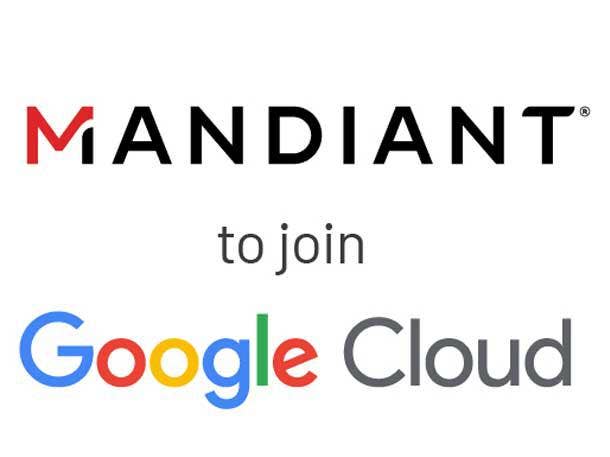
No. 1: “Nothing Else Is Even Like It:’ Google Buys Mandiant For $5.4 Billion
In one of the biggest acquisitions in the company’s history, Google acquired cybersecurity superstar Mandiant this year for $5.4 billion.
Google Cloud and Mandiant together will “reinvent how organizations protect themselves as well as detect and respond to threats,” said Kurian.
Google Cloud welcomed approximately 2,600 Mandiant employees to the company in September. Mandiant has retained the Mandiant brand as part of Google Cloud.
Mandiant is providing Google Cloud with real-time, in-depth threat intelligence technology and expertise that Mandiant has built from working with the largest organizations in the world on the frontlines of cybersecurity.
Google Cloud is combining its existing security portfolio with Mandiant’s leading cyberthreat intelligence to deliver a security operations suite to help customers stay protected at every stage of the security life cycle.
“Nothing else is even like it in terms of the amount of security capabilities that we’ve brought into Google Cloud,” Jeff Reed, vice president of product for Google Cloud Security, told CRN this year.
Mandiant’s services are spread across 22 countries, helping enterprises and organizations of all sizes prepare for and react to cybersecurity incidents.
“We know that Mandiant had excellent threat intelligence, so it’s about how do we bring that threat intel on Chronicle as soon as possible? They do a bunch of things in a proactive perspective, so how do we do that now [at Google Cloud]?” Reed said.
The Takeaway For 2023: Google Cloud is trying to make cybersecurity a major market differentiator against its cloud rivals with the $5.4 billion purchase of Mandiant. It will be interesting to see the new security launches from Google in 2023 as well as if Kurian makes it a point next year to highlight Google Cloud’s security gains against the competition.